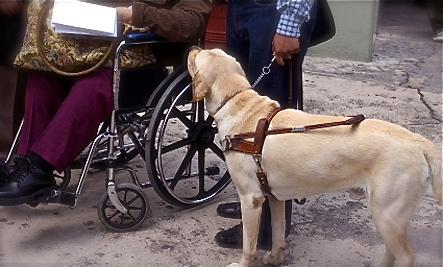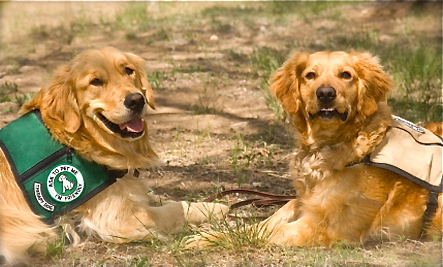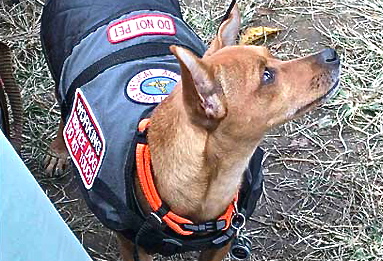1. Seeing Eye Guide Dogs
The most publicly familiar pet assistant is the Seeing Eye guide dog. Their training enables visually impaired people to move about safely, and also gives people a greater sense of independence. Guide dog programs originated following World War I to assist impaired veterans in the United States, which led to the establishment of The Seeing Eye in 1929, an organization that is still in operation today.
2. Animal Assisted Therapy
One of the most fundamental advantages of animal assisted therapy (AAT) over other therapeutic modalities is that it provides the patient a much-needed opportunity to give affection as well as receive it. It is this reciprocity — rare among medical therapies — that makes AAT a unique and valuable route to healing.
3. Seizure Alert
Seizure alert dogs have an innate ability to detect the onset of epileptic seizures sometimes hours in advance. Though canine skill in predicting episodes is a medical mystery, it is “a natural instinct, or ability, which some dogs are particularly inclined to act upon … most likely, through its sense of smell, the dog is detecting the chemical and electrical changes within a person’s body caused by seizure activity.”
4. Diabetes Alert
Another incredible skill some dogs have is the ability to detect in advance when a diabetic person is going to suffer from a sudden drop in blood sugar. Unfortunately, like seizure alert dogs, diabetes alert dogs are not covered by medical insurance. But their ability to save lives baffles medical experts…
5. Hearing Dogs
Professionally trained companion dogs for the disabled can be specially trained to help the hearing impaired as well. By signalling people with gentle head-butts or other sensory stimuli, these service dogs provide vital assistance as well as companionship.
6. Service Dogs
It is important to make the distinction between therapy, assistance, and service dogs. Service dogs, by definition, are specially trained to assist people with disabilities, including physical, emotional, and other health impairments. Because service dogs are professional assistants, they are not considered pets. Due to this, service dogs are allowed access to areas that otherwise prohibit pets.
7. Service Dogs for the Mobility Impaired
For people who have a limited range of motion (perhaps due to partial paralysis), a helping paw can help in carrying and retrieving items, or even helping to pull a wheelchair. Different service animals are identified by their ability to assist mobility impaired individuals, which extends to providing support for people with stability and balance issues, as well.
8. Therapeutic Companion Dogs
Therapy dogs differ from service dogs in that they provide comfort and companionship to people with disabilities, or those hindered by illness. Therapy dogs are usually part of a volunteer program that is made up of naturally good-tempered, docile, and friendly house pets. Unlike service dogs that have had specialized training, therapy dogs are not professionally trained; but they are often tested and accredited for therapy.
9. Skilled Companion Dogs
The human animal bond is so strong that the quality of life for those who are isolated or socially challenged is indelibly improved by the presence of a companion pet. Skilled companion dogs are specially trained pets that provide therapeutic affection while assisting in mobility tasks where necessary. Those being assisted includes people affected by autism, Down’s syndrome, and cerebral palsy, all of whom have found themselves the beneficiaries of skilled canine companionship.
10. Facility Dogs
Imagine being bedridden in a hospital or a long-term care facility. The more isolated people feel, the longer it may take for them to recover or respond to treatment. Canines are trained to visit people in facilities such as hospices and hospitals. The clear benefits of therapeutic animal visits have been the focus of medical studies, the results of which were published in the Journal for Gerontology: Medical Sciences in July 2002.
Excerpted from PetMD







